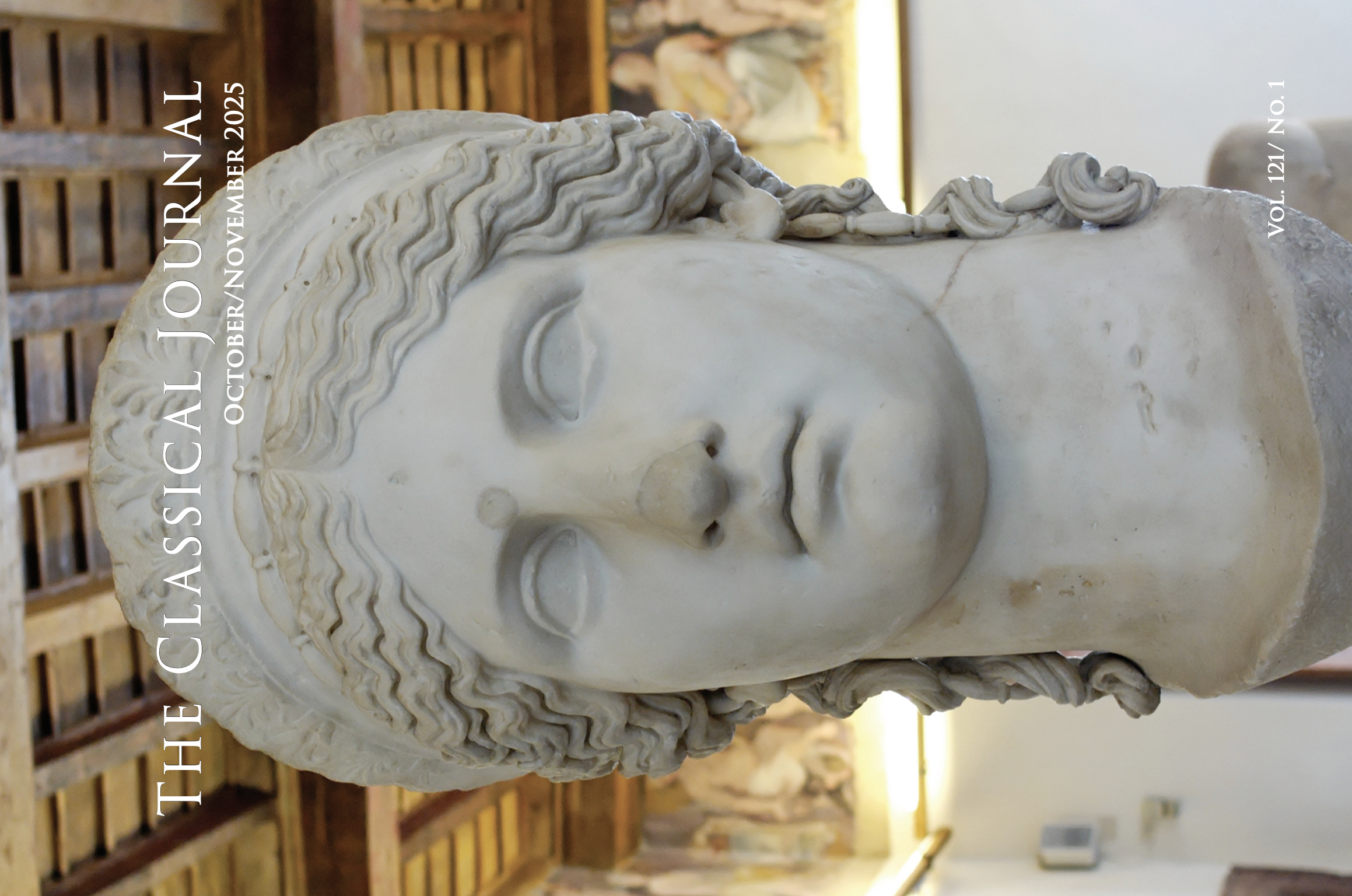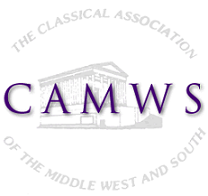The following articles are contained in CJ
109.4
Abstracts of Articles
SOCRATION OR PHILODEMUS? CATULLUS 47 AND PROSOPOGRAPHICAL EXCESS
Since 1908, scholars have been fascinated by the possibility that the name Socration in Catullus’ poem
47 might be a pseudonym for the Greek poet and Epicurean philosopher, Philodemus. This article first
traces the history of the identification of Socration with Philodemus, placing it within the context
of late nineteenth and early twentieth century Catullan scholarship; the context of the Catullroman
helps to explain why the identification became so popular. The article then reviews the arguments
that have been used to uphold the identification, concluding that there is no credible evidence to
support it.
VIRGIL'S SALIAN HYMN TO HERCULES
The lengthy ceremonies in Hercules’ honor that Evander and his Arcadians perform at the prehistoric Ara
Maxima in Pallanteum reach a climax with the hymn that the Salian priests sing at Aeneid 8.285–305.
This paper analyzes that carmen, with attention to hymnic structure, intertextuality, and the larger contexts
of Virgil’s epic narrative, Roman religion, and Augustan culture. The Salian hymn to Hercules is a remarkable
passage, the only hymnic text in the Aeneid, and, as far as I know, the first hymn in Latin heroic epic.
[1] Complementing this innovation are other striking aspects, all interrelated. Virgil here stages a version
of a traditional cultic song—the Salian Hymn—which was said to be unintelligible in his own day. His Carmen
Saliare is itself extraordinary in formal terms. That Salii honor Hercules at Rome likewise surprises. Moreover,
in reflecting upon the significance of Salian hymnody in contemporary Rome, Virgil simultaneously highlights the
Augustan dimension of Evander’s festival for Hercules.
SHADOW OF A DOUBT: A PHANTOM CAESURA IN HORACE ODES 4.14
In his Odes, Horace routinely places a caesura after the fifth syllable of his Alcaic hendecasyllables.
Four of the exceptions to this rule have been shown to be expressive, but the fifth, at 4.14.17, has never been
adequately accounted for. The expectation of such a caesura encourages the reader or listener to (mis)hear the
word incerta in the phrase in certamine Martio. The shadow of this word may generate a feeling of doubt about
the surrounding panegyric, or its disambiguation may dramatize the elimination of such doubt. The word incerta
is also a self-reflexive signal of its own ambiguous status.
FIGURING (OUT) THE AVARUS: ETHICS, AESTHETICS AND COUNTER-AESTHETICS IN HORACE, SATIRE 1.1
Horace in Satire 1.1 stakes out a Callimachean-neoteric identity, typically using ethical themes to
double as programmatic statements on aesthetics. The auarus, conversely, as symmetrical counter-image
of the satiric speaker, is figured in “counter-aesthetic” categories. Ethical value and “anti-value” are
aligned to aesthetics and “counter-aesthetics:” the miser’s perversion is tracked in an ironically
self-deconstructing “aesthetic” discourse (iuuat, pulchrum, suaue, delectat, gaudere tabellis) and in a
number of other gestures that recognizably refract an original poetological reference. The resulting tension
humorously punctures his misguided logic and confronts his “parallel universe” with the real world.
CANNIBALIZING OVID: ALLUSION, STORYTELLING AND DECEPTION IN JUVENAL 15
Satire 15 is not a straightforward narrative about Egyptian practices of cannibalism, but a stylized,
rhetorical exercise in intertextuality. Juvenal undermines his narratorial authority through an ongoing
engagement with Ovid’s Metamorphoses. Juvenal hints that storytellers may sometimes be deceitful, and in
turn he seems to embrace this role. Throughout the satire, intertextuality takes the place of proof as both
exempla and argumentation are corroborated by means of Ovidian allusion. As a result, the cannibalization at
the core of the satire may be read as analogous to Juvenal’s literary duplicity.
THE GEOGRAPHY OF CULTURE IN PHILOSTRATUS’ LIFE OF APOLLONIUS OF TYANA
While the travel narrative in Philostratus’ Life of Apollonius of Tyana has been the subject of much
scholarly commentary, little has been said about the geography created by those travels. This paper examines
the representation of Paraca, Greece, and Rome to demonstrate how Philostratus reverses the traditional Greek
view of center and periphery. In his figuration, the extreme geographic periphery of Paraca becomes the center
of civilization, whereas the traditional center of Rome is reconceptualized as a dangerous periphery. This
reversal supports Philostratus’ larger commentary on the loss of self-knowledge in the Greek world and its
consequences.


